Seasons in the Sanctuary
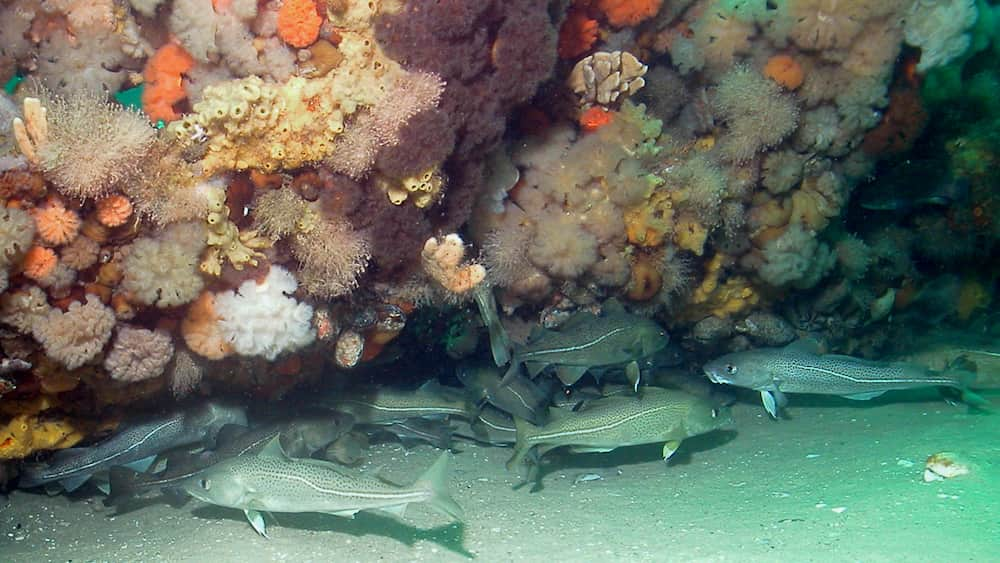
The sanctuary exhibits a four-season cycle that contains two distinct periods of heightened productivity. The arrivals and departures of species are linked to this natural cycle.
Winter
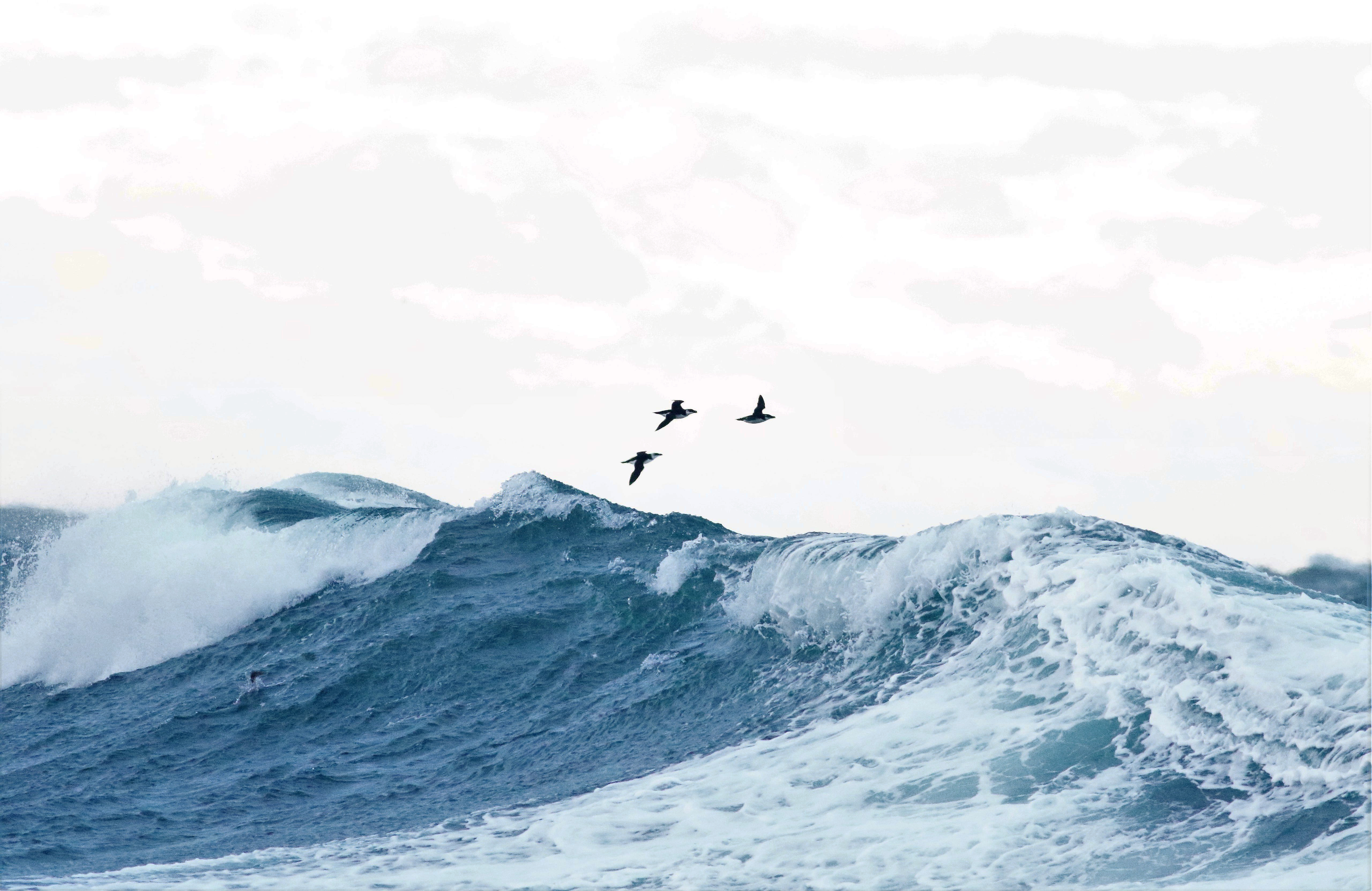
In terms of oceanography, winter in Massachusetts Bay and the sanctuary runs from mid-October to mid-March. Wind speeds are generally at their highest, waves are taller, and the water column is well mixed. Water temperatures start dropping from their warmer summer-fall readings, and by mid-November they average about 50-54 degrees Fahrenheit from surface to seafloor. Temperatures drop continuously until mid-February through early March when the entire water column registers at about 37 degrees Fahrenheit. Although nutrients are plentiful, the cold temperatures and lack of light due to the short days, the tilt of the Earth on its axis, and the reduced penetration of light through the water do not support the growth of phytoplankton (the base of the food web). The lack of productivity at the base of the food web leads to lesser abundance of most types of organisms.
Species: Sand lance spawn in late November-early December; Alcids (razorbills, Atlantic puffins, thick-billed and common murres, dovekies) and sea ducks (common eiders, black and white-winged scoters, long-tailed ducks) arrive for their winter stays. Sea turtles, if they were slow to depart or took a wrong turn, end up cold-stunned and wash up on Cape Cod beaches. Learn about Stellwagen Bank's birds of winter.
Spring
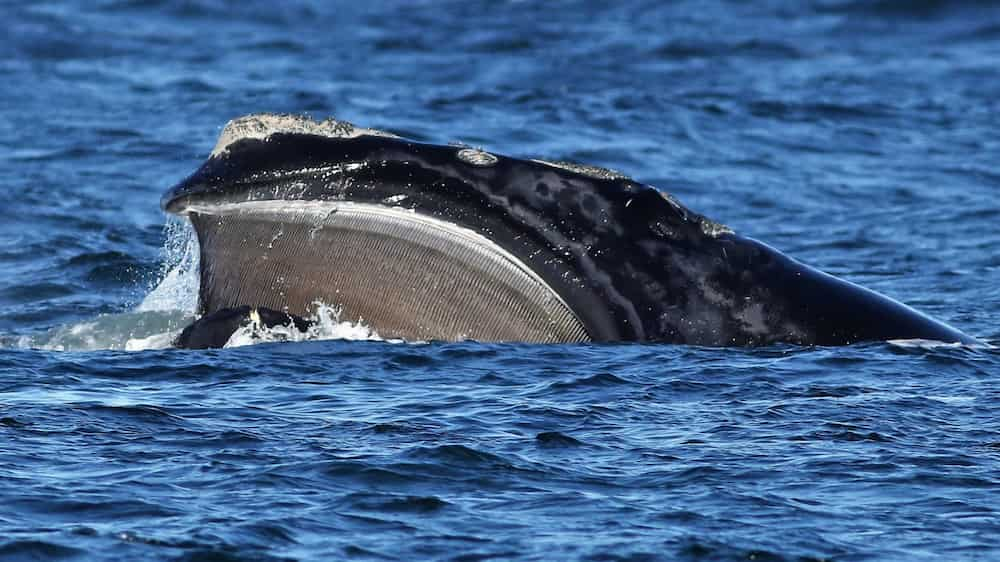
Spring arrives in March and lasts through April. Salinity is at its lowest in late spring due to freshwater inputs from coastal rivers. Although deeper waters stay quite cold, surface waters start warming. Increasing water temperatures are driven by warmer air temperatures, longer days, and increased sunlight. With the well-mixed water and high nutrient levels, the increased sunlight kick-starts photosynthesis in the phytoplankton (microscopic marine algae). Phytoplankton blooms start in the shallow areas of Cape Cod Bay and then move out towards the sanctuary. Zooplankton, small drifting animals such as the tiny shrimp-like copepods, eat the plank-like phytoplankton. As a result of their quick reproduction rates, the copepods provide food for a wide variety of species. Learn about Stellwagen Bank's shoulder season birds.
Species: Phytoplankton blooms and the zooplankton patches become dense. Critically endangered North Atlantic right whales cruise Cape Cod Bay and the sanctuary, each eating up to a ton of copepods each day. Birds migrating to more northern breeding grounds stop to feed, including diving northern gannets and Arctic terns. Sand lance feed on Calanus copepods and begin peak growth period. Poor Calanus production during this period can result in the starvation of over-wintering adult sand lance, leading to food web disruption
Summer
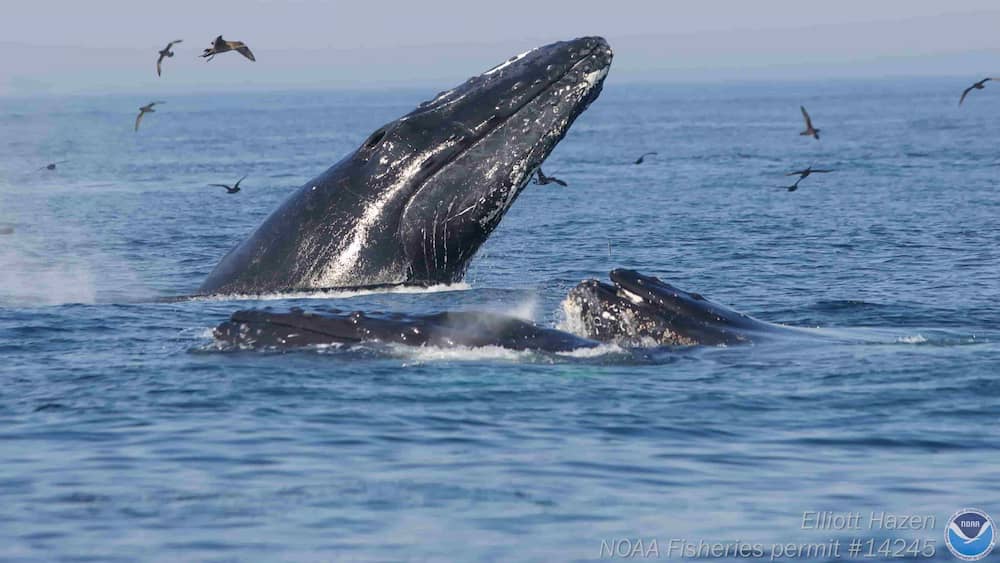
The sanctuary summer lasts from May until mid-August. Abundant sunlight supports phytoplankton growth, but warming leads to stratification of the water column, which prevents vertical mixing. Without vertical movement, nutrients from bottom waters cannot replenish surface waters. Once the nutrients are used up, the phytoplankton die and settle to the bottom, providing food for bottom-dwelling communities, which show a spurt in mid-summer. Wind speeds and wave heights are usually at their lowest at this time. Surface temperatures can reach upwards of 70 degrees Fahrenheit, although deeper waters remain cold. On Stellwagen Bank, energetic tidal currents overcome some of the stratification, and moderately enhance productivity. Respiration by bacteria, which consume dead plankton and other organic matter, reduces dissolved oxygen in late summer and early fall, making the waters less hospitable.
Species: Stellwagen Bank becomes a veritable smorgasbord. Humpback whales that started arriving in April, appear in large numbers with mothers bringing their calves; other whales, like fins and minkes, come for the food, too. Summer seabirds arrive, several like the great and sooty shearwaters and Wilson's storm petrel, after marathon flights from the South Atlantic. White sharks, attracted to the growing gray seal colony on nearby beaches, cruise through the sanctuary, as do ocean sunfish, and basking sharks. Sand lance continue to grow, reaching maximum size and lipid content, providing high quality food for many species. Learn about Stellwagen Bank's birds of summer.
Fall
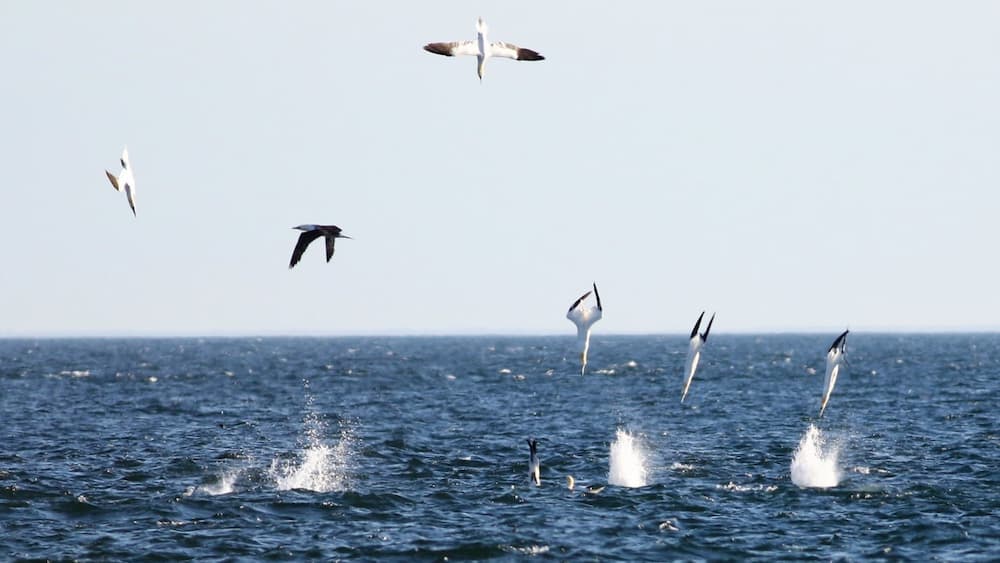
From mid-August through mid-October stronger winds, higher waves, and cooling surface waters (that sink) mix the water column. Dissolved oxygen, at its lowest at the start of the fall, starts slowly increasing during this mixing process, as does the transport of nutrients from the seafloor to the surface. Despite shorter days and less sunlight, a fall plankton boom occurs at the surface, although it is not as prolific as the spring bloom. This plankton bloom can stretch well into November. However, the low level of light in winter ends the bloom, and the decaying plankton break down into nutrients that collect throughout the water column.
Species: As the waters cool, many species start departing for warmer areas, such as large sharks and smaller spiny dogfish. Humpback whales begin the migration to the Caribbean and many seabirds start heading south. Sand lance estivate (a state of dormancy) in the sand substrate until winter spawning. Learn about Stellwagen Bank's shoulder season birds.

